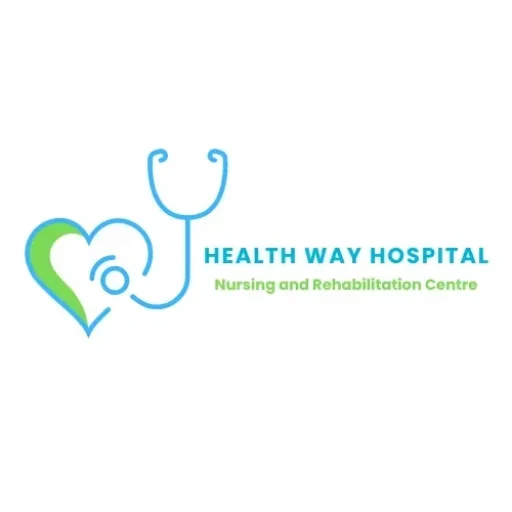Respiratory conditions
Respiratory conditions: It includes many conditions that affect the lungs, including the lungs, airways, and related structures. These conditions can be mild, such as a cold, or severe, such as pneumonia or chronic obstructive pulmonary disease (COPD). Symptoms may include cough, wheezing, shortness of breath, chest pain, and shortness of breath. Symptoms may be caused by infections, environmental factors such as smoking or pollution, genetic diseases, or health problems. Treatment usually includes medications, lifestyle changes, respiratory therapy, and in severe cases, interventions such as oxygen therapy or surgery designed to reduce symptoms and improve function.
Overview of Respiratory Conditions
The most common respiratory conditions include asthma, bronchitis, pneumonia, pneumonia, and lung cancer. Respiratory diseases are often divided into obstructive and restrictive diseases. Obstructive pulmonary disease occurs when the airways become inflamed and narrow, making breathing difficult. Restrictive lung disease is characterized by decreased lung capacity and chest expansion, resulting in decreased ventilation and oxygenation. Respiratory diseases such as asthma, chronic obstructive pulmonary disease (COPD), and pneumonia can affect quality of life. They can cause symptoms such as shortness of breath, cough, wheezing and fatigue. These conditions can limit physical activity, impair lung function, lead to infections, and if left untreated, lead to hospitalization and even death. Treatment usually includes medication, lifestyle changes, and in severe cases, supplemental oxygen or surgery.
Diagnosing and Evaluating
Diagnosing and evaluating respiratory conditions includes medical history, physical examination, and tests such as spirometry, chest X-rays, CT scans, and blood tests to determine the cause. In difficult cases, additional testing may include maxillary sinus testing, bronchoscopy, and arterial blood gas analysis. These criteria help determine the severity, progression, and appropriate management strategies of various respiratory conditions to inform patient care.
Medications
Medications used to treat respiratory infections include bronchodilators (such as albuterol to relax the airways), corticosteroids (such as fluticasone for inflammation), antihistamines (such as loratadine to treat allergies), and mucolytics (such as guaifenesin, used to thin mucus). Antibiotics such as amoxicillin are used to treat infections such as pneumonia. Additionally, immunomodulators such as montelukast may help control asthma. Oxygen therapy is used to treat shortness of breath. Treatment plans vary depending on the specific condition and its severity and are usually developed by the doctor. If you have been diagnosed with a respiratory disease and your doctor has prescribed it, you can buy ventolin online or at your local pharmacy. Anti-inflammatory drugs, such as leukotriene modulators, prevent airway inflammation, and immunomodulators, such as Xolair, specifically target the immune system to reduce airway inflammation. These medications are usually given through an inhaler or nebulizer to quickly relieve symptoms.
Respiratory Therapy
Respiratory medicine is a specialized profession in healthcare that focuses on the evaluation, treatment, and care of patients with respiratory problems or failure. Respiratory therapists work with doctors to evaluate lung function, administer respiratory therapy, and provide ventilators to patients with conditions such as asthma, chronic obstructive pulmonary disease (COPD), chronic obstructive pulmonary disease, and chronic obstructive pulmonary disease. They perform tests such as pulmonary function tests and arterial blood gas analysis to determine the extent of breathing problems. Additionally, respiratory therapists teach patients breathing techniques, monitor their progress, and provide emergency care in critical situations. Their expertise plays an important role in improving the respiratory system and improving patients’ quality of life every day.
Pulmonary Rehabilitation for Respiratory conditions
If you have COPD, cystic fibrosis, lung cancer, or other breathing problems, a lung care program can improve your quality of life. A therapist will teach you new skills and supervise an exercise program to improve your strength. With their help, you can easily go out and collect your mail. Pulmonary rehabilitation is an education and exercise program designed to help people with chronic (chronic) lung disease. It won’t cure your lung disease, but you will notice fewer breathing problems, more energy, and a better quality of life. Pulmonary rehabilitation is a comprehensive program designed to improve the physical and emotional health of patients with respiratory conditions such as obstructive pulmonary disease (COPD), asthma, and pulmonary fibrosis. It includes exercise training, education, and behavioral interventions tailored to each patient’s needs. While the exercises are designed to improve cardiovascular, muscle strength, and endurance, the lessons cover topics such as proper breathing, medication management, and awareness of symptoms. With a multidisciplinary approach, lung treatment helps people manage symptoms, reduce hospitalizations, and improve overall quality of life.
Surgery for Respiratory Conditions
Respiratory surgery involves a variety of procedures designed to treat diseases that affect the lungs and airways. Common interventions include lung resection for cancerous tumors, lung reduction surgery for severe disease, and lung transplant for end-stage lung disease. Lung transplant is a surgical procedure in which a diseased lung is replaced with a healthy lung from a donor. A lung transplant is a last resort to treat serious lung diseases such as COPD or pulmonary fibrosis. Risks include rejection and infection, but it offers the promise of better quality of life and longer survival for suitable patients. Additionally, procedures such as thoracotomy and thoracoscopic surgery can be performed in the diagnosis and treatment of conditions such as hydrothorax or pneumothorax. Advanced technologies such as robot-assisted surgery provide precision and less invasiveness, reducing postoperative complications. Although there have been advances in medical treatment, many surgeries are still important for treating respiratory diseases, improving patients’ quality of life, and increasing survival.
